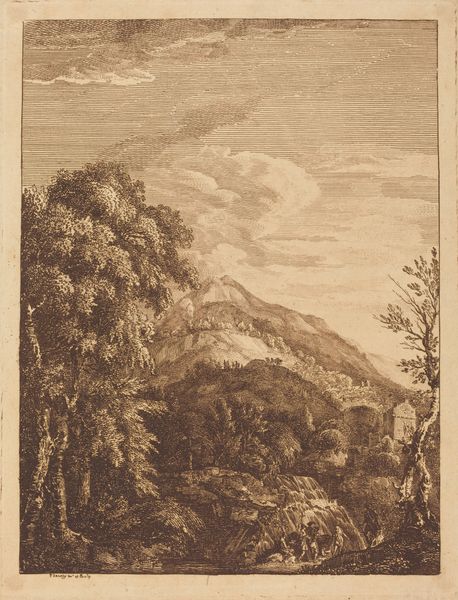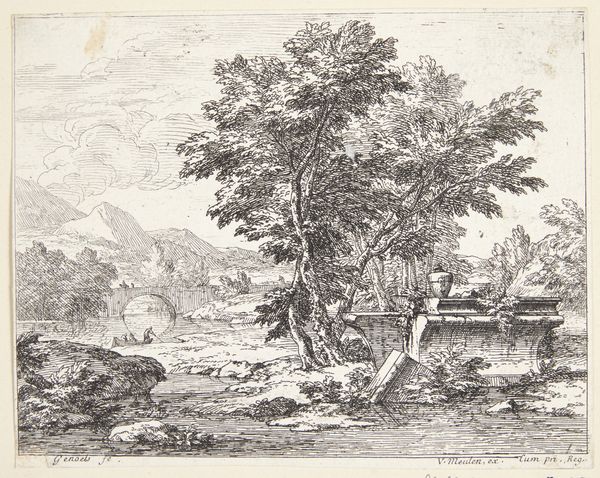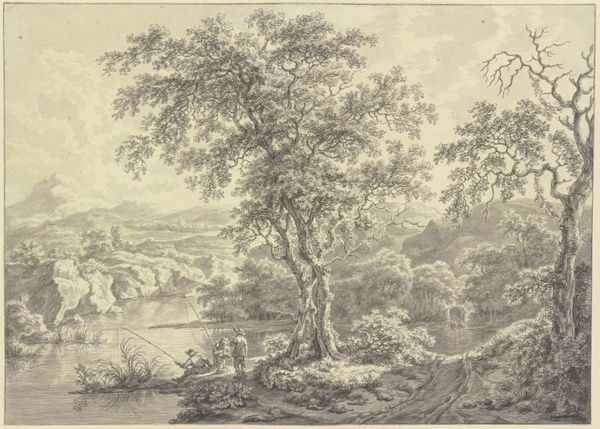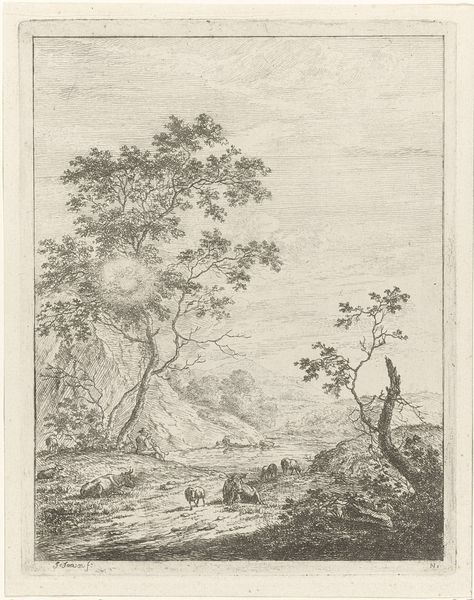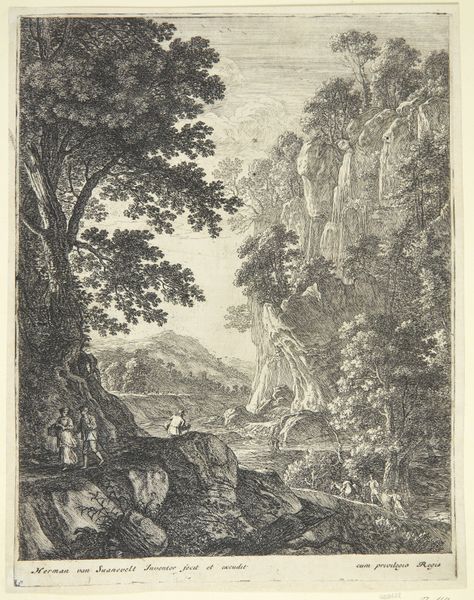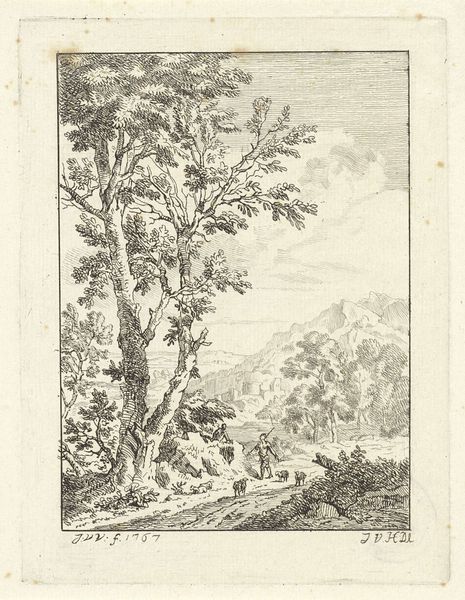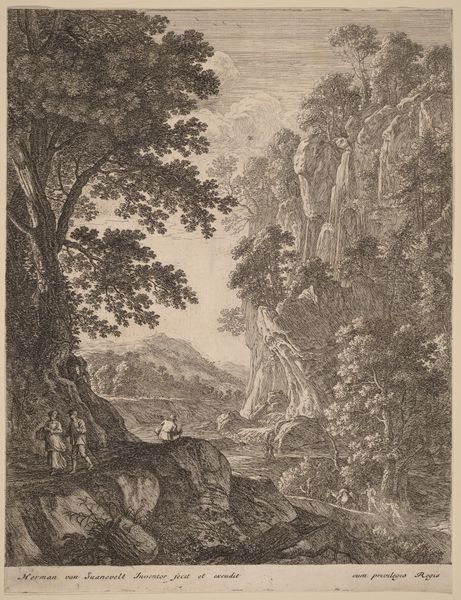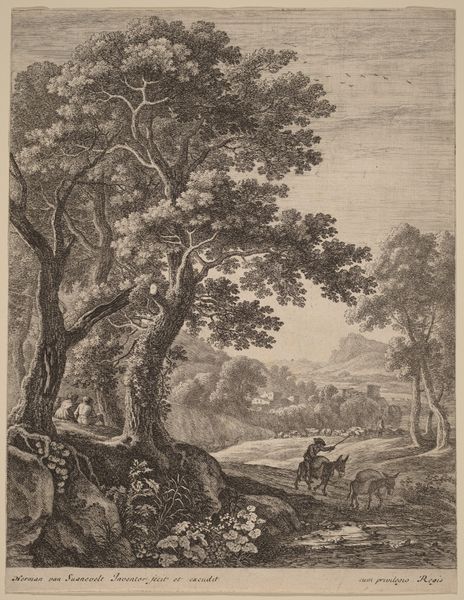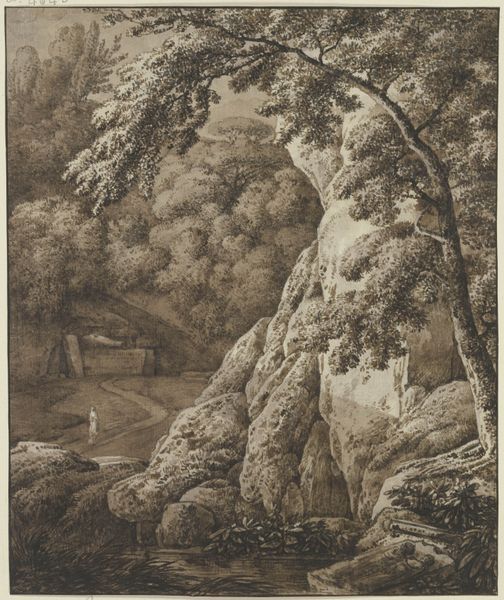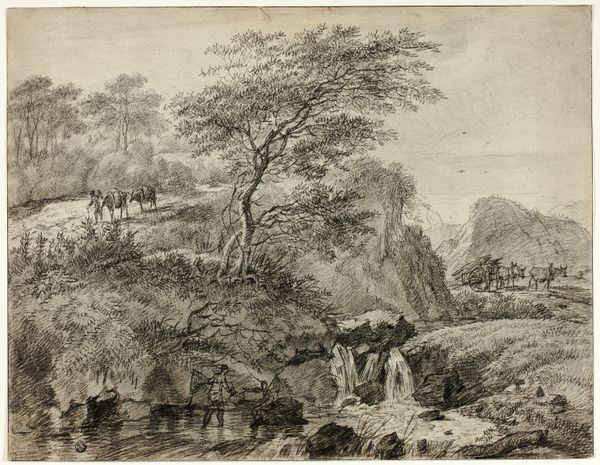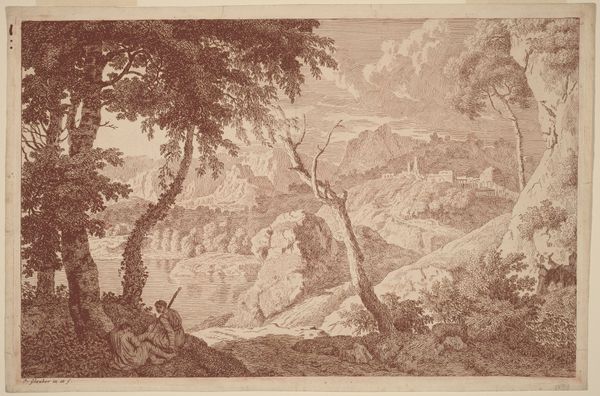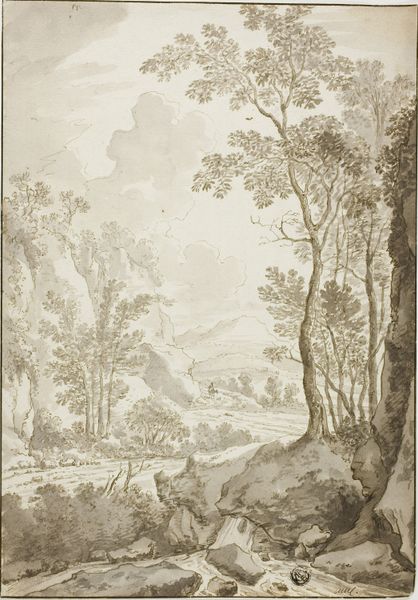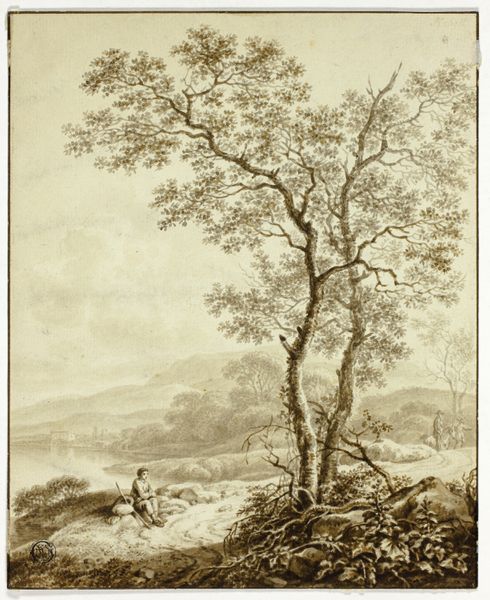
Dimensions: sheet (trimmed within plate mark): 42.9 x 33.8 cm (16 7/8 x 13 5/16 in.)
Copyright: National Gallery of Art: CC0 1.0
Paul Sandby made this etching of an Italianate Landscape in the 18th Century. But what does it mean for a British artist to picture an Italian scene? Well, in the 1700s, travel to Italy was a rite of passage for upper-class Britons. Known as the Grand Tour, this trip was seen as essential for a young man's education and cultural refinement. Pictures like this one fed that desire, allowing those who couldn't travel to imagine the picturesque Italian countryside. Sandby never actually went to Italy. Instead, he looked at the work of other artists who had been there, like Canaletto, and he borrowed elements from their paintings to create his own idealized landscapes. To understand more, we can look at the archives of travel companies, diaries of Grand Tourists and the history of the Royal Academy, where Sandby exhibited. This artwork reflects the social aspirations of 18th-century Britain, where art served to reinforce class distinctions and national identity.
Comments
No comments
Be the first to comment and join the conversation on the ultimate creative platform.
